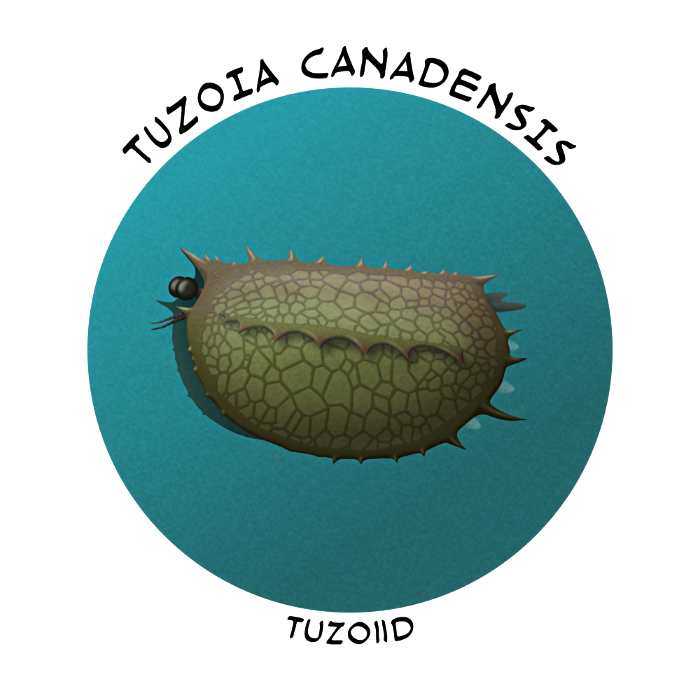What were tuzoiids?
We don’t know.*
Despite hundreds of specimens having been found, and around 20 different species being described, these arthropods are an ongoing puzzle.
They’re known from between about 518 and 505 million years ago, in deposits associated with tropical and subtropical regions all around the world. They had large spiny bivalved carapaces up to 18cm long (7″), shaped like an upside-down domed taco shell, with a distinctive reticulated net-like surface ornamentation – but the rest of their ecology and anatomy is very unclear.
Most fossils are just empty carapaces, which appear to have been made of unmineralized chitin. Rare examples of soft-part preservation show they had a pair of stalked eyes sticking out the front, and a pair of short simple antennae, but impressions of the rest of their bodies are fragmentary and indistinct enough to not be particularly helpful.
They may have been related to the similar-looking isoxyids, or they might have closer affinities to the pancrustaceans or possibly even the equally enigmatic thylacocephalans.
Unless we find some better fossils with clearer anatomy, they’re going to remain a mystery.

Tuzoia canadensis was one of the pointier-looking tuzoiids, known from the Canadian Burgess Shale deposits (~508 million years ago). About 10cm long (4″), its carapace was lined with many long spines, with a more prominent spiky side frill than most other species.
Its reticulated ornamentation had fairly large polygonal facets, and like in other tuzoiids this is thought to have had a strengthening function – allowing it to create a large but very thin carapace with enough structural integrity to hold its shape.
———
*Edit: As of 2022, tuzoiid soft tissues have been found! Turns out they’re early mandibulates and probably closely related to hymenocarines.
